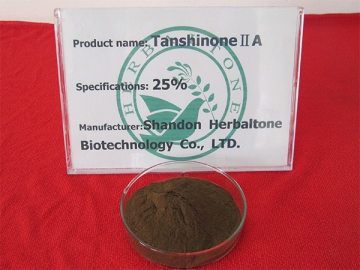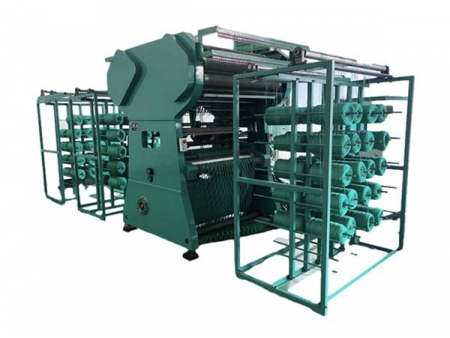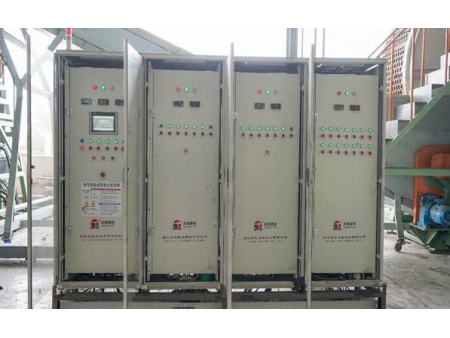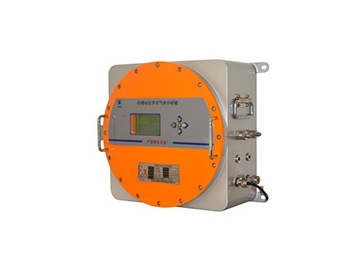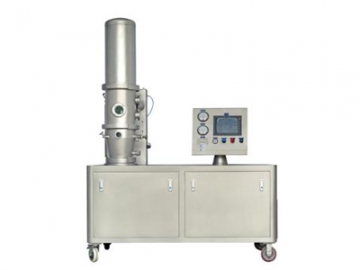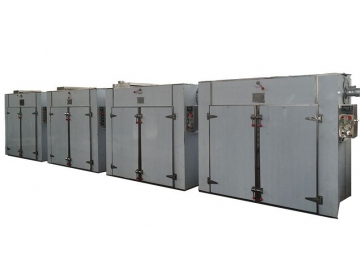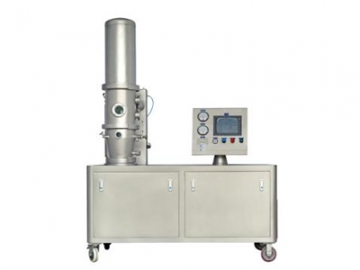Tanshinone ⅡA
Basic Information
Name: Tanshinone ⅡA
CAS No.: 568-72-9
CAS Name: Phenanthro [1, 2-b] furan-10, 11-dione, 6, 7, 8, 9-tetrahydro-1, 6, 6-trimethyl
Molecular formula: C19H18O3
Molecular weight: 294.3
Physical Property
Tanshinone ⅡA is in the state of brownish red powder or cherry red acicular crystal; it is insoluble or sparingly soluble in water, and soluble in such organic solvents as dimethyl sulfoxide, ethanol, acetone, ether and benzene; the structure of tanshinone compound is stable in the solid state, but unstable in the liquid state; for example, the structure of liquid tanshinone will change according to external environments, such as light, heat, pH, etc.; after light irradiation and oxidation, the liquid tanshinone will turn into the hydroxy tanshinone IIA.
Source
Tanshinone ⅡA is from the dried root and rhizome of Salvia miltiorrhiza Bge. and the root of Salvia sclarea L.
Pharmacological Activity
1. Protecting coronary artery
Tanshinone ⅡA can be used for the treatment of coronary heart disease; it can improve the circulation in the coronary artery and inhibit thrombosis. The sulfonated Tanshinone ⅡA is a water-soluble substance named as Sodium TanshinonⅡA SilateA, which can increase coronary blood flow and improve myocardial metabolic disorder caused by hypoxia, thereby enhancing the hypoxia tolerance of myocardium. This natural herbal extract is suitable for the treatment of angina pectoris, chest suppression, myocardial infarction, as well as premature ventricular contraction. The treatment effect on coronary heart disease is similar to that of compound Danshen injection.
2. Myocardial repair
Tanshinone ⅡA is a commonly used pharmaceutical raw material that can help effectively reduce myocardial injury resulted from hypoxia; meanwhile, it can improve the myocardial contractility to promote the myocardial regeneration.
3. Improving Microcirculation
This plant extract can expand the arterioles to increase the number of opened capillary network, so as to accelerate the velocity of blood flow and increase the volume of blood flow, thereby improving the microcirculation.
4. Effect on rheological property of blood
Tanshinone ⅡA has anti-coagulation function and can lower the viscosity of whole blood and plasma, thus reducing the hematokrit and enabling the rheological property of blood to return to normal. It is applicable for patients suffered from coronary heart disease, stroke caused by cerebral ischemia and myocardial infarction.
5. Reducing blood lipids
Able to inhibit the synthesis of endogenous cholesterol and cut down the generation of oxidized low-density lipoprotein (LDL), Tanshinone ⅡA can reduce neutral fat and be excellently used for the treatment of atherosclerosis caused by hyperlipidemia.
6. Preventing AS (Ankylosing spondylitits)
This active natural product has anti-oxidation effect and can prevent the oxidation of LDL (low-density lipoprotein), therefore, it can protect EC(elasticity coefficient) and maintain the normal function of the secreted PGL2, preventing the formation of AS.
7. Anti-infection
Tanshinone ⅡA is applicable for the treatment of suppurative and surgical infections, including acute tonsillitis, otitis externa, osteomyelitis, surgical site infections, etc. Proved by the in-vitro inhibition assay, it can strongly inhibit the human mycobacterium tuberculosis H37Rv bacteria.
8. Anti-tumor
This natural medicinal ingredient has cytotoxic effect on a variety of tumor cells. It kills tumor cells by inducing them to have differentiation and apoptosis, and realizing invasion, suppression and metastasis. Tanshinone ⅡA can be used for the treatment of breast cancer, stomach cancer, liver cancer, cervical cancer, leukemia and other diseases.
Purpose
Tanshinone ⅡA is mainly used in the medicine, health care products and food industries.
Specification and Quality Control Index
We professionally manufacture all kinds of tanshinone ⅡA products and salvia extracts; customized production in line with customer-specific requirements is available. Our quality control index includes trait, content, loss on drying, ash value, heavy metal limit, pesticide residue limit, microbial limit, etc.; other items of quality control index can be added based on customer needs.
